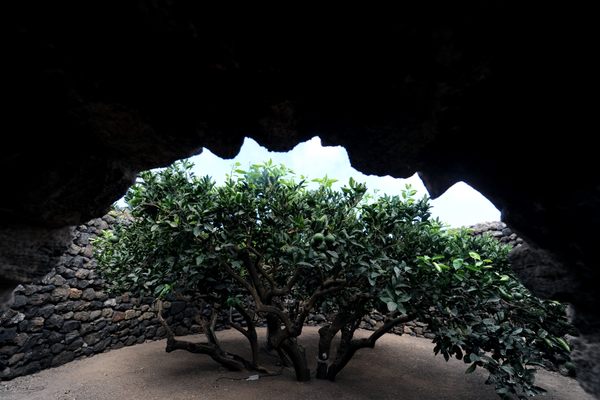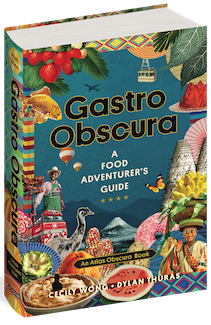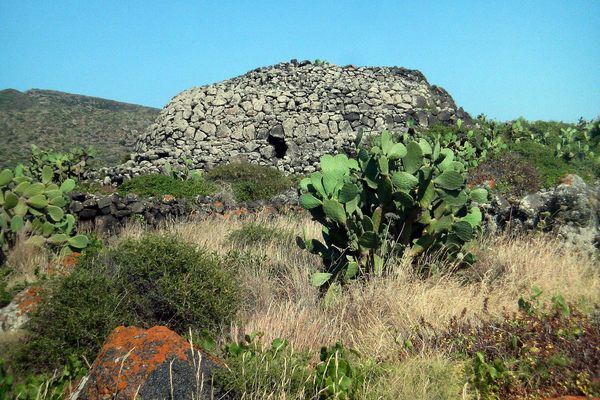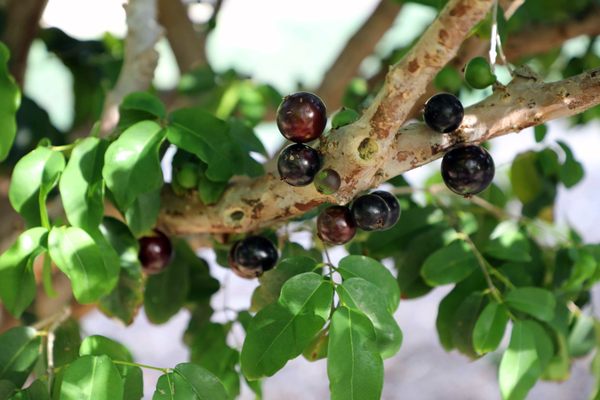Pantelleria—Italy’s most distant and least visited island, a rocky outcropping off the shores of Tunisia—is buffeted by desert winds and rarely sees proper rain. Moisture, what little there is, arrives mostly in the form of fog.
How to survive in such a place? Ancient Pantellerians, over the millennia, devised an amazingly clever fog-catching garden design now known as the giardino Pantesco (“Pantellerian garden,” in Italian), each one for the sole purpose of nurturing a single sprout.
Giardini Panteschi are perfectly circular and are precisely calibrated to have walls of a specific height: tall enough to catch the fog and block the wind, but short enough to allow as much sun in as possible. Basketball-sized boulders are expertly stacked freehand—mortar is never used—into five-foot-thick walls that curve to encircle a 30-foot diameter enclosure with one small opening through which the gardener can crawl. The top of the circular wall always slopes inward, which is the key to the unique design of the giardino Pantesco: The jagged, convoluted crevices of the volcanic rock catch the fog (which explains why using mortar is forbidden: the goal is to maximize surface area), and then the inward-facing slope channels the moisture into the enclosure, where it moistens the soil. At the center of all this a single orange or lemon seed is planted, in hopes of eventually growing into a full-size tree. The garden walls simultaneously water the plant, protect it from the wind, and keep it warm at night by emanating sun-baked heat, creating their own nano-climate.
This remarkable design occurs only on Pantelleria. No one knows how far back this invention goes: Some attribute it to the Phoenicians, who colonized the island 3,000 years ago; or maybe it was the Greeks, or the Romans, or the Byzantines, or the Arabs, or the Crusaders, or the Ottomans, or one of the many other civilizations who made the mistake of trying to live on Pantelleria over the years. Desperation is the mother of creativity; and if it takes months of backbreaking labor to keep one little sapling alive and thereby provide life-saving vitamin C to the population, then start digging.
Very few giardini Panteschi have survived to the 21st century: Luckily, the best-preserved example, in the vineyards of the Donnafugata winery, was donated to the Fondo Ambiente Italiano (Italy’s equivalent of the National Trust) and is now open to the public near the village of Khamma, on the east side of the island.
Know Before You Go
The giardino Pantesco's exterior is open to the public for free self-guided visits throughout the summer during daylight hours; simply park at the winery and ask any employee how to walk to the garden through the vineyards. To see the inside, call ahead and arrive before 9:30 a.m. for a guided visit, or pay to join any of several daily on-site winery tours or tastings (don't miss their Ben Ryé Passito, one of the highest-rated wines in the world), most of which also include an explanatory visit inside the garden's wall. The Donnafugata Winery is on Via Khamma on the east side of Pantelleria, between the airport and the town of Khamma. Officially, their address is "Contrada Khamma Fuori 6," but street numbers don't help much finding your way around the island, so if you get lost, they recommend using GPS coordinates (N36.805746, E12.02167). For off-season visits or reservations, call the winery at (+39) 0923 915 649.
These have also been used for growing cabbage and kale in the Scottish Highlands and Islands, but are known as plantie crubs or crö. Round dug and walled structures (picón) are also used in the La Geria region of Lanzarote for growing wine and fruits.
Community Contributors
Added by
Edited by
Plan Your Trip
The Atlas Obscura Podcast is Back!



















Follow us on Twitter to get the latest on the world's hidden wonders.
Like us on Facebook to get the latest on the world's hidden wonders.
Follow us on Twitter Like us on Facebook